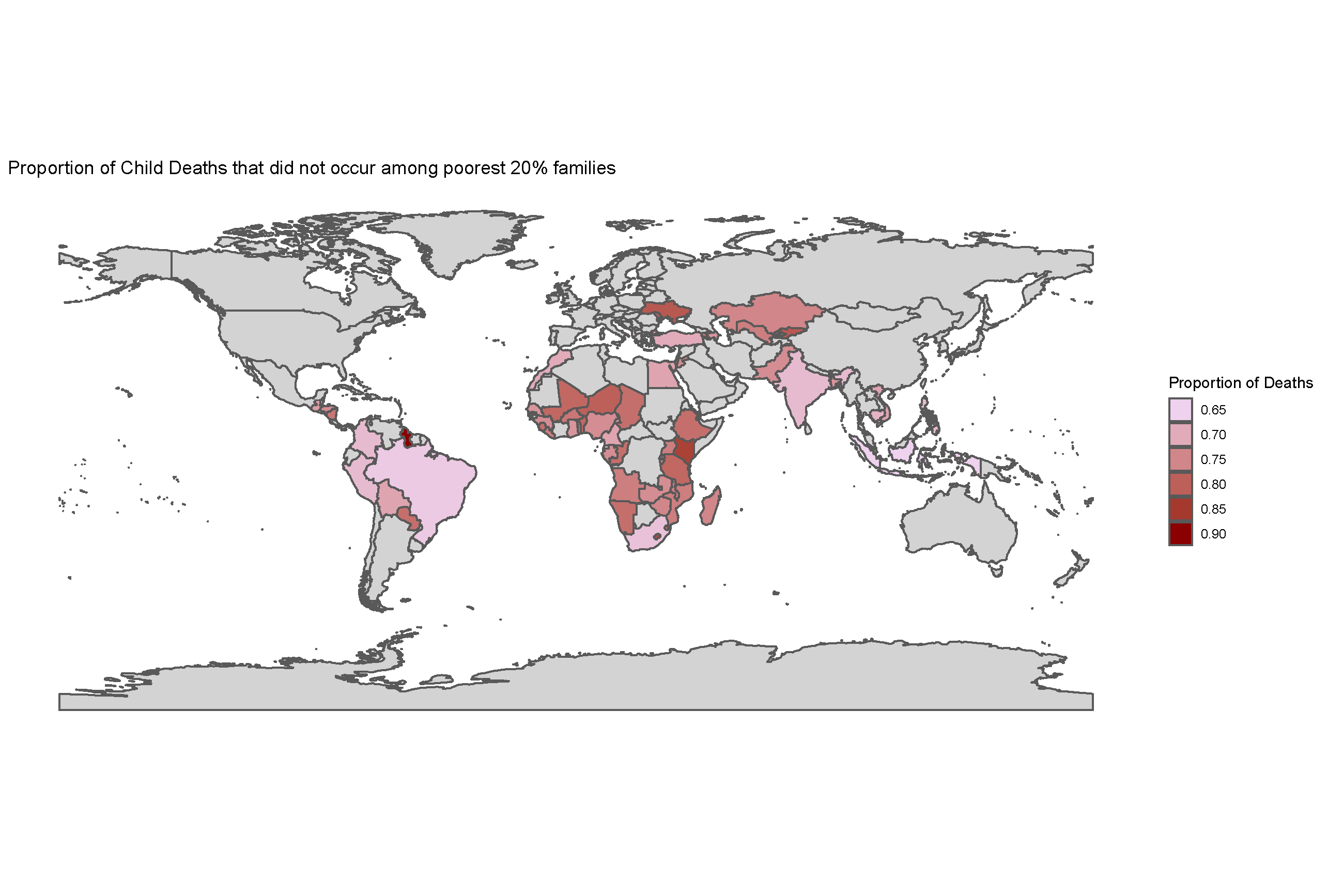UNDER EMBARGO: October 14, 2020; 11AM Pacific / 2PM Eastern / 7PM British Time
“Our paper shows how to better identify at risk children and improve program targeting for at risk children in low and middle income countries,” said Robert Weiss, Fielding School professor of biostatistics and co-author of the study, published this month in the peer-reviewed journal PLOS ONE. “Policy makers often target the poorest 20% of children for interventions to decrease risk of premature death. However, children with high risk of premature death exist across all socioeconomic groups.”
The researchers used data on almost 1.7 million births from 67 low- and middle-income countries (LMIC). They compiled information from some 182 different surveys, creating a new computer model that accurately and efficiently assesses which children are at highest risk of preventable death, said study co-author Antonio Pedro Ramos, a research scientist with the Fielding School’s Department of Biostatistics and the California Center for Population Research.
“Our work shows the percentage of child deaths that occurred outside the 20% poorest; these child deaths are missed by typical interventions,” said Ramos, whose work has included a focus on his native Brazil. “This percentage varies from 65% in some countries to 95% in others, and simply identifying at risk children as those in the 20% poorest will miss the majority of children who could benefit from health policy interventions.”
The team, which includes researcher Martin J. Flores of the Department of General Internal Medicine, David Geffen School of Medicine at UCLA, found that across all 67 countries, there was more variability in mortality within socioeconomic groups than between them—and within countries, socioeconomic membership tended to explain less than 20 percent of the variation in mortality risk.
The authors also found that the highest-risk births tended to be those from mothers who are in the lowest socioeconomic group, live in rural areas, and/or already experienced the death of a previous child.
The research ties with the United Nation’s Sustainable Development Goals, which call for a substantial reduction in preventable deaths for children five and younger by 2030. To effectively monitor and reduce inequities in under-5 mortality, it is necessary to identify children at highest risk so they can receive intervention.
However, recent studies have shown that multiple risk factors are implicated in under-5 mortality, and program targeting based purely on poverty can be inefficient. In this study, Ramos and colleagues describe a new, more comprehensive model that uses data from multiple demographic variables to measure mortality inequities and identify high-risk subpopulations of children that would otherwise be left behind.
“Targeting children based on poverty alone is not sufficient to catch all potentially at-risk children,” Ramos said. “Poverty is clearly linked to an increased risk in mortality, and examining poverty alongside the additional risk factors their model uses helps identify even more of these left-behind children.”
Funding: The work is partly funded by funded by the Eunice Kennedy Shriver National Institute of Child Health & Human Development of the National Institutes of Health under Award Number K99HD088727.
Data Availability Statement: All relevant data are available on the Demographic and Health Surveys website and publicly accessible upon registering: https://www.dhsprogram.com/data/new-user-registration.cfm
Image Caption: Proportion of child deaths that did not occur among poorest 20% families.
Image Credit: Antonio Pedro Ramos and colleagues (2020)
Citation: Ramos AP, Flores MJ, Weiss RE (2020) Leave no child behind: Using data from 1.7 million children from 67 developing countries to measure inequality within and between groups of births and to identify left behind populations. PLoS ONE 15(10): e0238847. https://doi.org/10.1371/journal.pone.0238847
The UCLA Fielding School of Public Health, founded in 1961, is dedicated to enhancing the public’s health by conducting innovative research, training future leaders and health professionals from diverse backgrounds, translating research into policy and practice, and serving our local communities and the communities of the nation and the world. The school has 690 students from 25 nations engaged in carrying out the vision of building healthy futures in greater Los Angeles, California, the nation and the world.


